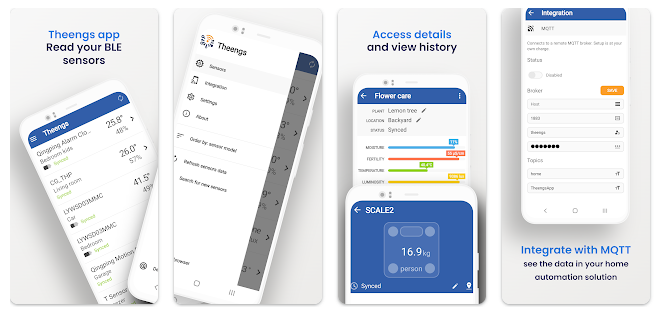I’m excited to announce the release of Theengs Android mobile application, the application uses Theengs Decoder to read data from BLE devices and display those to your mobile,

you can download it on Google Play (paid app)
To stick with the spirit of OpenMQTTGateway the app can also be used as a gateway to an MQTT broker! So if you have an Android touch screen, you can install the app and configure it to read BLE sensor data and push it to your favorite Home Automation controller.
Note that if you want to run the integration in the background this is possible as an experimental feature (we need your feedback on this).
More information on the app documentation.
We came a long way from removing the decoding of BLE sensors from OpenMQTTGateway, creating a dedicated library, creating a gateway, a Home Assistant Addon a data explorer and now a mobile application!
And you know what, this is not the end, we have plans to release the app for other platforms.
Commentaires
Enregistrer un commentaire